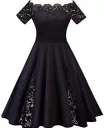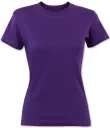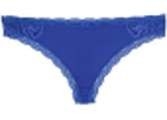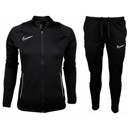Current fashion trends and timeless classics at prices that will delight. Clothes for home, work or sport. Choose from your favourite natural materials. Vintage linen clothing for fans of sustainable fashion. Enjoy shopping for new clothes in the peace and warmth of home. Shop with us with no masks, no tests, no vaccinations. There's no question that blue bamboo women's clothing sustainable fashion is a topic of endless fascination. Every season, new styles and trends emerge, and fashionistas everywhere scramble to stay ahead of the curve. But beyond simply being stylish, what does women's clothing say about us? What messages do we send with our choices? For many women, clothes are a way to express themselves. They use fashion as a form of self-expression, communicating their personality and style to the world. And while some may choose more understated looks, others make bolder statements with their clothing choices. But it's not just about self-expression. Clothes can also be used as a tool for empowerment. Wearing certain items can make you feel strong and confident, ready to take on anything that comes your way. In a world where women are often judged based on their appearance, clothes can be used as a way to subvert expectations and assert control over how you're seen by others. Of course, not all women view clothing in such serious terms. For many of us, getting dressed is simply about finding something that looks good and feels comfortable. We don't put much thought into the deeper meaning of our wardrobe choices. We just want something that will make us look & feel our best. No matter how you approach your personal style, there's no denying the power of clothes in shaping who we are and how we're perceived by others.
Blue
You have selected products in
blue color or products that are predominantly blue. We also include products in petrol blue, azure and denim shades. Blue is the color of sea and sky, evoking a feeling of freedom and space. It combines well with white and black. Blue has long been a popular color in fashion, and it seems to be making a comeback in recent years. It is versatile enough to be worn for both casual and formal occasions, and it can be flattering for all skin tones. Here are some tips on how to wear blue in your wardrobe. For a casual look, pair blue jeans with a white top or shirt. This is a classic combination that always looks chic. You can also try a denim skirt or shorts with a blue print blouse or top. If you want to dress things up a bit, consider wearing a navy blue blazer with slacks or skirts in lighter shades of blue. This is an excellent option for work or meetings. For evening events, go for an electric blue dress or gown. Accessorize with silver jewelry to really make the outfit pop! No matter what your style, there is sure to be a shade of blue that works for you. So don't be afraid to experiment with this beautiful hue!
The blue color is one of the most popular colors in the world. It’s associated with trust, loyalty, wisdom, and confidence. Blue also represents stability and harmony. For centuries, blue has been used in fashion as a symbol of royalty and prestige. In the Middle Ages, only nobles were allowed to wear clothes dyed with ultramarine – a type of intense blue pigment made from Lapis lazuli stones. Nowadays, blue is still considered a luxurious color. It’s often seen on high-end clothing and accessories like designer purses and shoes. If you want to add a touch of luxury to your outfit, consider wearing something blue.
Bamboo
Bamboo is a natural textile raw material used in the textile industry for a relatively short time. Bamboo fibers are pleasant to the touch and more resistant to bacterial growth than cotton. Bamboo clothing is easy to dye, absorb moisture, is breathable and also suitable for allergenic skin. It combines well with other fibers such as cotton and hemp. Bamboo is an undemanding plant, can be harvested after 2-3 months and grows on drier soils than cotton. Bamboo is an environmentally sustainable material that has a range of advantages over other materials used in fashion. Bamboo grows quickly and does not require the use of pesticides or fertilizers, making it a more eco-friendly choice than conventional cotton. It is also extremely soft and comfortable to wear, making it a popular choice for luxury fashion items such as robes and bedding. In addition, bamboo is highly absorbent and therefore ideal for summer clothing as it helps keep the body cool. Finally, bamboo is a strong and durable material that can be used to make high quality items that will last for many years. There are many reasons to choose bamboo over cotton. Bamboo is a more sustainable and eco-friendly option, as it requires far less water and land to grow. It also has natural antibacterial properties, making it ideal for use in clothing and other products that come into contact with the skin. Bamboo is also softer and more absorbent than cotton, making it more comfortable to wear. There are over 1,000 species of bamboo plants in the world, with the majority native to Asia. Bamboo typically grows in tropical and subtropical climates, but some varieties can tolerate cold temperatures. The tallest bamboo species can reach heights over 30m, while others only grow to about 2 m tall. The size of the bamboo plant will dictate how it can be used – taller varieties are better suited for construction projects or privacy screens while shorter types work well as groundcover. Bamboo is composed of three main parts – the root system, culms (stems), and leaves. The root system consists of an extensive network of shallow roots that spread out from the base of the plant. This allows bamboo to anchor itself securely in the ground and access nutrients and moisture from a large area. The culms are hollow tubes made up of interwoven fibers that give bamboo its strength and flexibility. Leaves are attached to the culms and are generally linear in shape with serrated edges.
Sustainable fashion
Products in the
sustainable fashion category will delight you and our planet. By using ecological and local resources, we help our environment. An important emphasis on the quality of goods that not only look nice but also last a long time. By purchasing quality and timeless products, our customers help reduce excessive consumption. Diverse products from small designers and independent clothing brands. All this is the goal of our collection. Thousands of our satisfied customers are proof that this path is chosen correctly. Will you join too? Sustainable fashion is a movement that is gaining popularity among consumers, retailers, and designers. The challenge for the sustainable fashion industry is to produce clothing and accessories in an environmentally friendly and socially responsible manner. Sustainable fashion takes into account the entire lifecycle of a garment or accessory, from the sourcing of materials to manufacturing, distribution, use, and disposal. To be truly sustainable, a product must be designed with the intention of being reused or recycled back into its constituent parts at the end of its useful life. The term “sustainable fashion” was first coined by designer Katherine Swanson in 1987. It wasn’t until the late 1990s/early 2000s that sustainability became mainstream as part of the global environmental movement. In response to increased awareness of environmental issues such as climate change, depletion of natural resources, and pollution, many companies began to adopt eco-friendly practices throughout their supply chains. The sustainable fashion industry has continued to grow in recent years as more brands commit to producing garments using sustainable methods and materials. There are many reasons why people are choosing to buy sustainable fashion over fast fashion (clothing produced quickly and cheaply). For some consumers, it’s about making a personal statement or political statement against an industry they see as harmful to people and planet. Others simply appreciate the higher quality construction and longer lifespan of well-made garments made from natural fibers. And then there are those who simply want to save money in the long run by investing in pieces they can wear for years instead of disposing of after just a few wears like many fast fashion items end up being used for nowadays.. Whatever the reason may be for buying into sustainably made clothes there's no doubt that this type support system is on trend right now! So what does it mean when something is considered "sustainable?" Typically this refers to how earth's limited resources were used during production processes without causing damage or depleting them so future generations can still enjoy them too - think renewable energy sources like solar panels versus fossil fuels like coal power plants . Other important considerations include things such working conditions (are employees treated fairly?), pay rates (a livable wage?), water & air pollution output during manufacturing (limit toxic runoff!), plus biodegradability at end-of-product life which we'll touch on more later but all these factors play an important role when discussing whether something can be classified as "sustainable." Natural fibers such as cotton , wool , linen , hemp , bamboo etc., have been grown for centuries without much intervention from humans outside typical farming practices . On average these types need far less water than conventional crops plus don't typically require pesticides or other harsh chemicals often used with manmade / synthetic textiles which can pollute both soil & waterways . When sourced & processed responsibly natural fibers also tend break down much quicker once disposed compared say polyester fabric which could take decades before fully decomposing leaving behind harmful microplastics that not only negatively impact our environment but also eventually ourselves if ingested . So overall using clothings made out naturally derived substances would appear be better choice both you & planet...but not always! Just because something comes from nature doesn't guarantee it's necessarily good you - take poison ivy plant example: completely organic yet contact with leaves will cause skin irritation most people . There other factors consider beyond material content itself determine level sustainability including how item actually manufactured process known wet finishing where dyes set fabrics usually very resource intensive lots wastewater created contaminated hazardous chemicals If done incorrectly lead serious health problems workers exposed These effects felt way downstream final product reaches consumer. Imagine all steps involved getting shirt onto store shelves. That's lot different than farm growing cotton fiber. Then spinning yarn weaving fabric dying printing packaging shipping selling. Finally wearing washing drying discarding. All choices along affect not only looks feel durability but also cost ecological footprint. Let's examine closer look popular textile options see differences between them detail what goes making each kind article clothing might find closet today.
 Dresses
Dresses
 Skirts
Skirts
 Coats, Jackets
Coats, Jackets
 Blazers, Boleros
Blazers, Boleros
 Trousers, Leggings
Trousers, Leggings
 T-shirts, Tops
T-shirts, Tops
 Sweaters, Cardigans
Sweaters, Cardigans
 Lingerie
Lingerie
 Sweatshirts
Sweatshirts
 Blouses, Shirts
Blouses, Shirts
 Socks, Tights
Socks, Tights
 Shorts
Shorts
 Sleepwear
Sleepwear
 Tracksuits
Tracksuits
 Jumpsuits
Jumpsuits
 Vests
Vests
 Swimwear
Swimwear